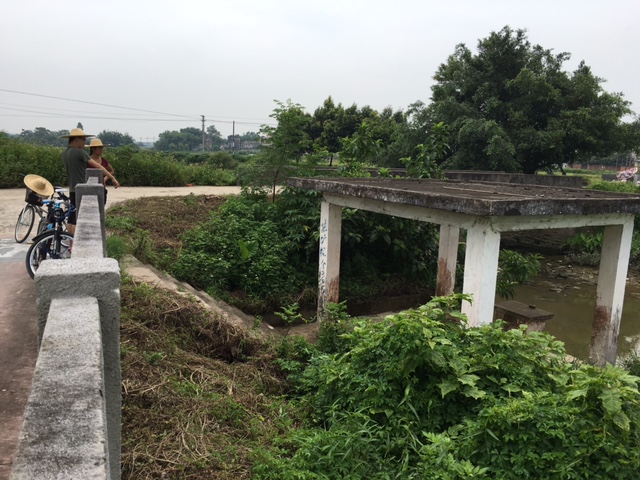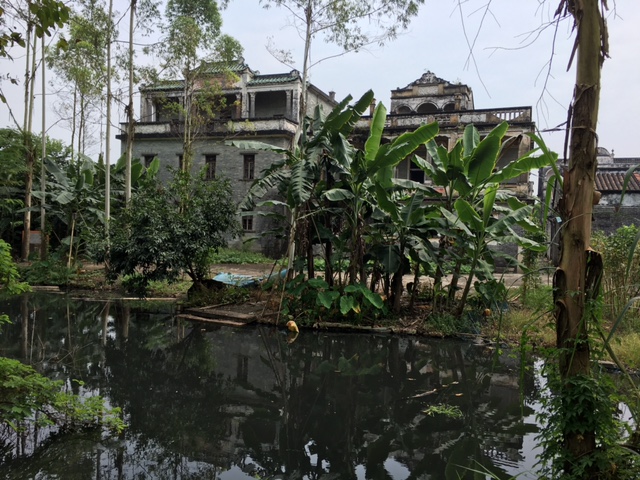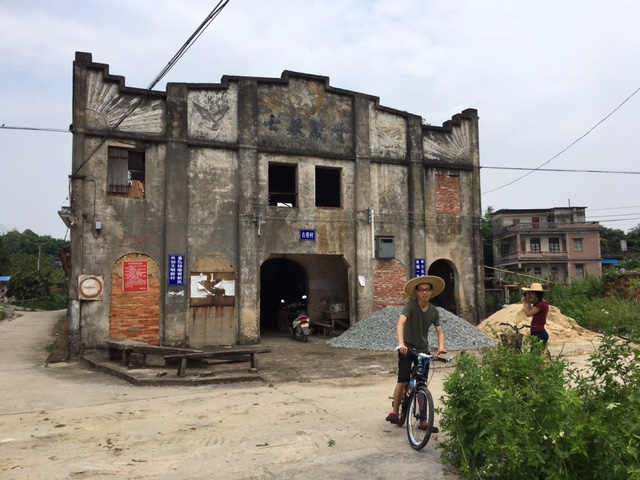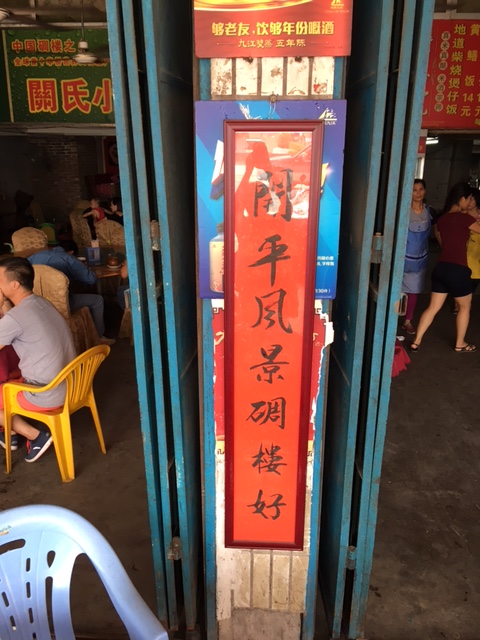On the 7th, some government officials from Jiangmen came and CJ had to go to Cangdong Village early in the morning. Nana, Shionyi, and Tony all went to help. Jim, being really used to government official visits, really didn’t want to go, and asked if he could just stay behind. So, Jim and Sonia and I took a slow morning and then headed off to play on our own.
Jim took the long greenway route from Tangkou to Liyuan. This route is breathtaking but there are a lot of thorny plants that get in our way.
He stopped us at this pavilion on the river and explained that it played a role in funerary processions. The night before the funeral, the family members would come here to pray and get some water from the river to bathe the deceased.

“It’s called buying water (买水),” Jim said. “It’s similar to the river styx in the west. In both the east and the west, we have this belief about bodies of water as gateways into the underworld.”
As I was writing this, I had to ask Shionyi which “mai” was the “purchasing” character.
“Oh!” She said, “That makes me think of something! When I was little, and I was thirsty, my mom wouldn’t let me say the phrase, ‘I want to buy water (我想买水).’ She said that I should never say that unless my dad passed away. She said that if I really wanted to say that I wanted some water, I should say, ‘I want to buy a bottle of water (我想买一瓶水).'”
Jim showed us so much and taught us so much! This is why I have three blog posts for July 7th…

When we biked by these two pretty buildings, Jim explained that it was really common for houses to have a little pond right next to it. And usually, it would be a crescent-shaped pond.
“Is it for feng shui purposes?” I had asked.
“…Close! But think of a more practical reason.”
The common materials for houses of this time were qing bricks and wood. And it would not be uncommon for the house to catch on fire during cooking! Thus, fish ponds were actually there to put out fires…
Here are pictures of two funny things that Jim pointed out along the way. On the left is a notice for a lost cow. It’s described to have wide horns and no rope. On the right, in the decoration above the door is the pinyin XINGFU, or the words “幸福,” which means fortune or happiness.
Ahhhhh Jim showed us so many things and there are so many pictures that I look at now, and I remember that I took them because Jim told me something interesting about it, but I have already forgotten what he said!
Here, he is standing in front of an old cafeteria from the Communist era. Anybody and everybody could eat here. Jim pointed out how much it evokes Soviet architecture, with its fierce and geometric rising suns, mighty birds…

Since Sonia came all the way to Kaiping, I couldn’t let her go home without having tried Clay Pot Rice! I wanted to take her to Chikan, but Jim took us to eat apparently the best Clay Pot Rice in Kaiping. It’s still in the Chikan township, he explained! Sonia ordered the Eel Clay Pot Rice. She is very brave.
I took a picture of this sign that says “開平风景碉楼好,” which means “The sights and diaolou in Kaiping are great.” On another door post, there was a sign that read “關氏佳肴味道香,” which means “The food of the Guan family is delicious.”

We continued our way to Chikan town, because I wanted to visit the Guan and Situ libraries after lunch. It would be my first time being able to go inside, because the library hours are 10:00-15:30, and I always miss its opening hours.
Along the way, Jim explained the abundance of bamboo trees. “Villages are surrounded by bamboo because when bamboo grows, they grow in thick and dense groves. They serve as a defensive wall for the village. All of those dark leafy trees are bamboo.”
Here is Jim pointing out a village enceinte of bamboo.



